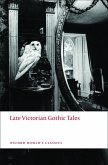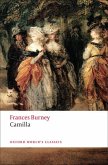Macabre and melodramatic, set in haunted castles or fantastic landscapes, Gothic tales became fashionable in the late eighteenth century with the publication of Horace Walpole's The Castle of Otranto (1764). Crammed with catastrophe, terror, and ghostly interventions, the novel was an immediate success, and influenced numerous followers. These include William Beckford's Vathek (1786), which alternates grotesque comedy with scenes of exotic
magnificence in the story of the ruthless Caliph Vathek's journey to damnation. The Monk (1796), by Matthew Lewis, is a violent tale of ambition, murder, and incest, set in the sinister monastery of the Capuchins in Madrid. Frankenstein (1818, 1831) is Mary Shelley's disturbing and perennially popular tale of young student
who learns the secret of giving life to a creature made from human relics, with horrific consequences.
This collection illustrates the range and the attraction of the Gothic novel. Extreme and sensational, each of the four printed here is also a powerful psychological story of isolation and monomania.
Each of these four Gothic stories reveals a psychological tale of isolation and monomania. H. Walpole's 'The Castle of Otranto' is filled with terror and ghostly interventions. William Beckford's 'Vathek' alternates grotesque comedy with scenes of exotic magnificence. 'The Monk', by Matthew Lewis and M. Shelley's 'Frankenstein' are also included.
magnificence in the story of the ruthless Caliph Vathek's journey to damnation. The Monk (1796), by Matthew Lewis, is a violent tale of ambition, murder, and incest, set in the sinister monastery of the Capuchins in Madrid. Frankenstein (1818, 1831) is Mary Shelley's disturbing and perennially popular tale of young student
who learns the secret of giving life to a creature made from human relics, with horrific consequences.
This collection illustrates the range and the attraction of the Gothic novel. Extreme and sensational, each of the four printed here is also a powerful psychological story of isolation and monomania.
Each of these four Gothic stories reveals a psychological tale of isolation and monomania. H. Walpole's 'The Castle of Otranto' is filled with terror and ghostly interventions. William Beckford's 'Vathek' alternates grotesque comedy with scenes of exotic magnificence. 'The Monk', by Matthew Lewis and M. Shelley's 'Frankenstein' are also included.

Nicht mal eines Namens wurde das Geschöpf für würdig befunden, immer heißt es nur die Kreatur oder das Monster, Frankensteins Monster. Der Doktor Viktor Frankenstein hatte einen perfekten künstlichen Menschen schaffen wollen, aber was bei seinem Experiment herauskam, war so abschreckend, dass es nirgends zugehörig sein durfte. Der absolute Outsider.
Wenn er in ein Dorf kam, fielen die Frauen in Ohnmacht, Steine wurden geschleudert. Das naive und empfindsame Monster floh aufs Land und erklärte der menschlichen Spezies den Krieg. Mary Shelleys „Frankenstein“, erschienen 1818, ist ein revolutionäres Buch, das von Identität und Freiheit handelt. Zur Kultfigur wurde das Monster 1931 durch den Film von James Whale – der als Homosexueller ums Außenseiterdasein wusste. Da fingen die Menschen an, sich ihrer eigenen Monstrosität bewusst zu werden. Und so etwas wie sympathy for the monster zu empfinden.
GÖT
Mary Shelley: Frankenstein. dtv, 304 Seiten, 8,90 Euro.
DIZdigital: Alle Rechte vorbehalten – Süddeutsche Zeitung GmbH, München
Jegliche Veröffentlichung und nicht-private Nutzung exklusiv über www.sz-content.de








